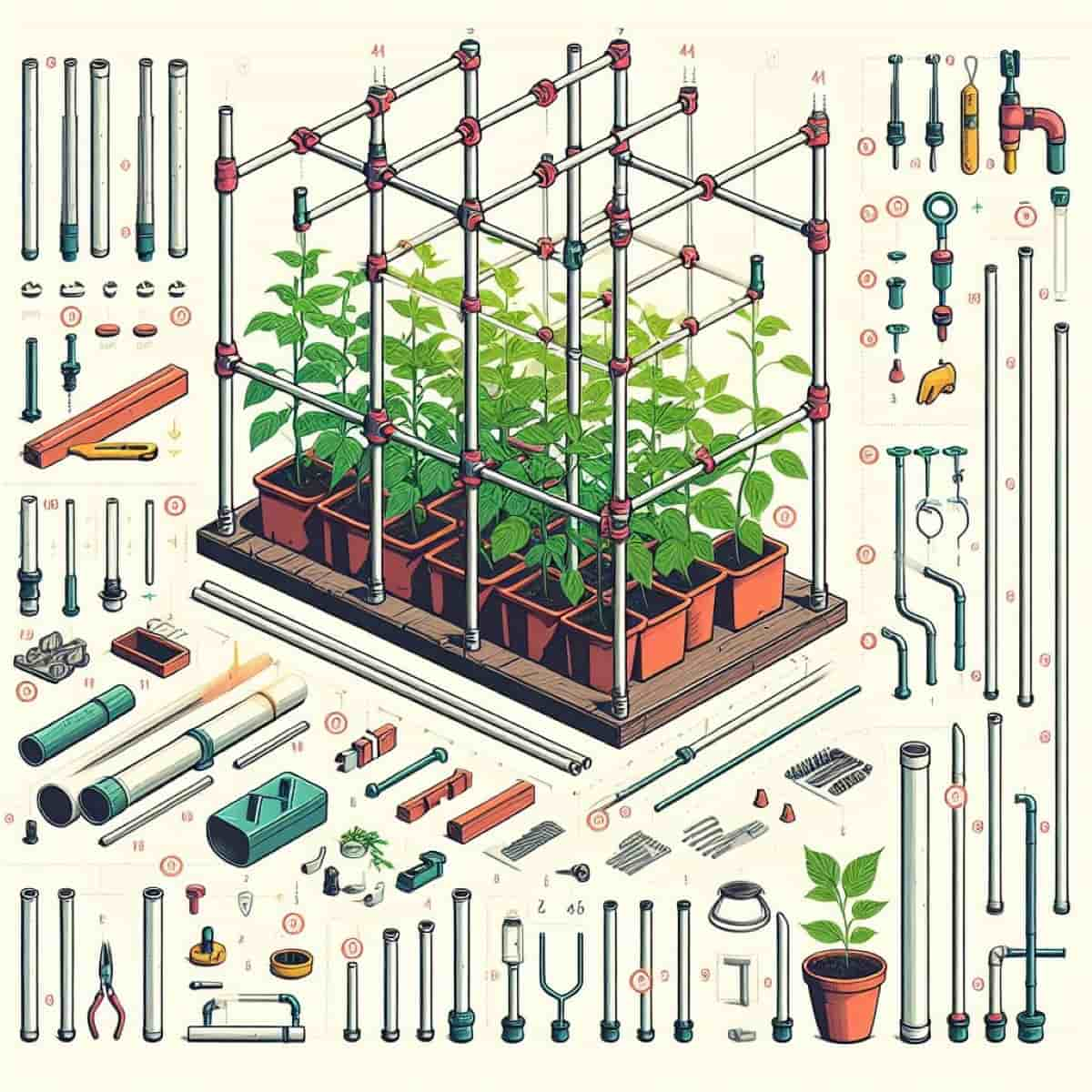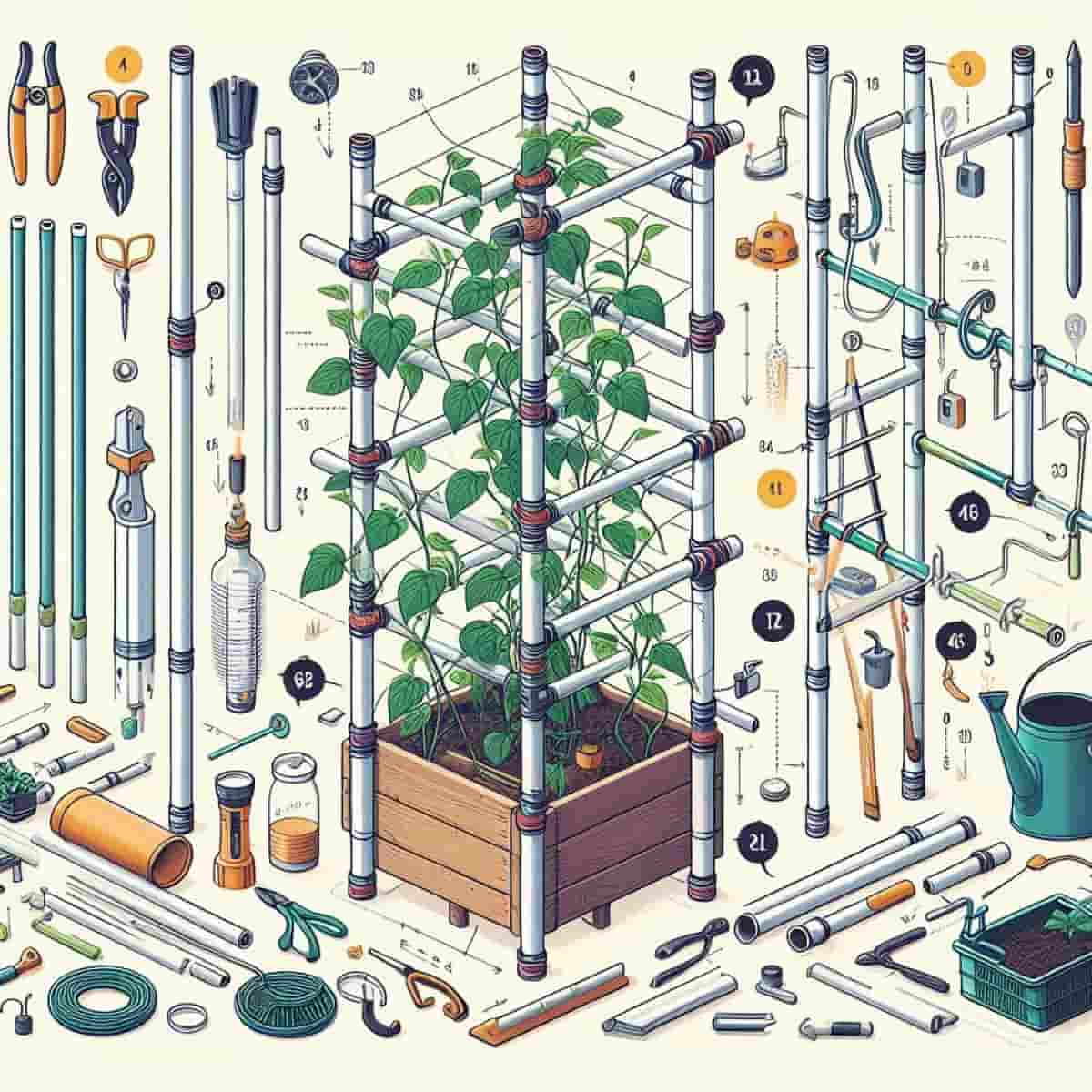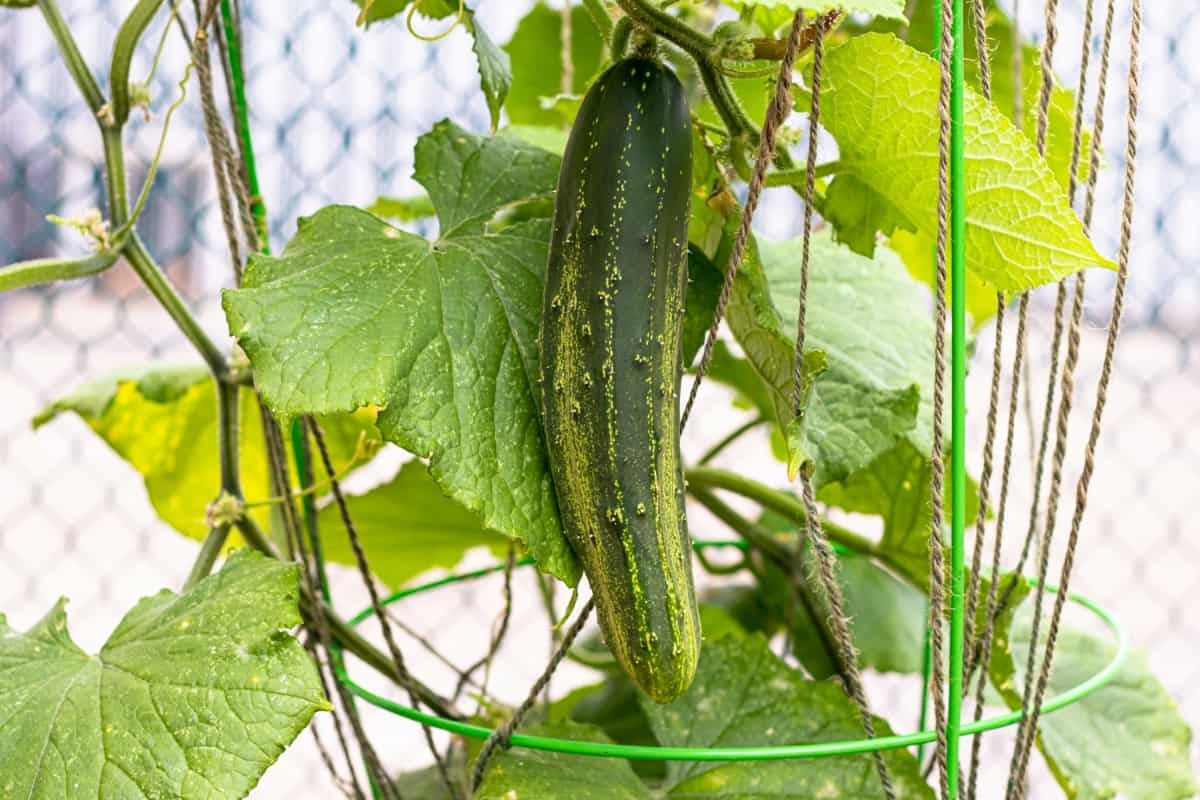Building a trellis for container gardening is easy and can transform your garden space. Whether you want to learn how to build a cucumber trellis, a teepee trellis for cucumbers, or make a garden trellis for other vegetables, this guide provides clear instructions. From choosing wood for trellis making to constructing a garden teepee trellis or a cedar trellis, we’ll cover every aspect of trellis construction for your container garden.

How to Build a Trellis for Container Gardening
Understanding the Benefits of Trellises in Container Gardening
Trellises offer numerous benefits in container gardening, enhancing both function and beauty. They support vertical growth, saving space and creating an appealing garden layout. For climbers like cucumbers, a trellis provides essential support, promoting better air circulation and reducing disease risks. By elevating plants, trellises also facilitate easier harvesting and pest monitoring. Furthermore, trellises add an aesthetic element to container gardens, creating a visually pleasing environment and allowing for creative design expressions.
Design Considerations for Building a Trellis in Container Gardening
When designing a trellis for container gardening, consider the plant type and garden space. The design should support plant growth while fitting into the available area. For cucumbers, a sturdy design like a cucumber trellis or a teepee trellis is ideal. Ensure the trellis height matches the expected growth of the plant. Ensure the design facilitates convenient maintenance and harvesting while also taking into account the garden’s overall aesthetic when creating the trellis, as it may serve as a prominent feature in your container garden.
Selecting Materials for Building a Sturdy Trellis in Container Gardening
The choice of materials is crucial for a sturdy trellis in container gardening. Cedar, a favored choice for constructing trellises, is renowned for its longevity and resistance to decay. The cedar trellis is a great choice for longevity. Other materials like metal or bamboo can also be used, depending on the garden’s aesthetic and your budget. Ensure the materials are strong enough to support the weight of mature plants. Also, consider the environmental conditions they will be exposed to, like wind, rain, and sunlight.
Step-By-Step Guide to Constructing a Trellis for Container Gardening
To construct a trellis for container gardening, begin by measuring and precisely cutting your selected material to your preferred dimensions. For a cucumber trellis or a teepee trellis for cucumbers, create a frame that can support the weight and growth pattern of these plants. Assemble the frame using nails or screws, ensuring it’s stable and secure.
In case you missed it: 10 Easy Steps to Start Indoor Gardening in Winter this Year

Attach a mesh or lattice for the plants to climb on. Finally, paint or treat the wood to protect it from the elements. When making a garden trellis, ensure that it’s proportionate to the container and can be easily inserted or attached.
Choosing the Right Climbing Plants for Your Container Garden Trellis
Selecting suitable climbing plants for your container garden trellis is essential. Cucumbers, peas, beans, and certain flowering vines are excellent choices. These plants not only add beauty but also utilize the vertical space efficiently. When choosing plants, consider their growth habits, sunlight, and water requirements, and compatibility with the container size. The trellis design should accommodate the specific climbing method of the plant, whether it uses tendrils, twining stems, or adhesive pads.
Maintaining and Caring for Climbing Plants on Your Container Garden Trellis
Maintaining climbing plants on a container garden trellis involves regular watering, fertilization, and pruning. To cultivate healthy and thriving plants, it is essential to follow several key practices. Firstly, ensure that the soil maintains a consistent level of moisture, avoiding excessive saturation. Secondly, use a balanced fertilizer to provide the necessary nutrients for plant growth.
Regularly inspect your plants for pests and diseases, taking immediate action to address any issues to prevent their spread. Lastly, implement pruning as a strategy to encourage healthy growth and improve air circulation around your plants. By adhering to these practices, you can help your plants flourish and thrive. As the plants grow, gently guide them onto the trellis and secure them loosely with ties if necessary. This care will ensure a healthy and productive container garden.
Incorporating Aesthetics into Your Container Garden Trellis Design
Incorporating aesthetics into your container garden trellis design elevates the overall appearance of your garden space. Select a design that harmonizes with the overall theme of your garden and the style of your containers. A garden teepee trellis, for instance, can add a whimsical touch. Play with colors and materials – a cedar trellis can offer a natural, rustic look, while painted metal can bring a modern vibe. Incorporating decorative elements like string lights or hanging ornaments can further enhance the trellis’s visual appeal, making it a centerpiece in your garden.
In case you missed it: Rose Trellis Ideas: Rose Trellis for Climbing Roses, Rose Trellis Plans, and DIY Building

Utilizing Vertical Space with Multi-Level Trellises in Container Gardening
Multi-level trellises maximize vertical space in container gardening, allowing for more plants in a smaller area. These structures are ideal for varied plant heights, creating a dynamic and layered garden appearance. With each level tailored to different plant types, a multi-level trellis can support a diverse range of climbers, from delicate flowering vines to robust vegetables like cucumbers, enhancing both functionality and visual appeal.
Installing and Securing the Trellis in Your Container Garden
Proper installation and securing of the trellis are crucial for stability and plant support. Position the trellis in the container before planting, ensuring it’s deeply anchored in the soil for support. If the container is lightweight, add extra weight or tie the trellis to a fixed object for stability. Regularly check the trellis for any looseness and tighten connections as needed. For larger or heavier trellises, consider additional supports or attachments to walls or railings to ensure safety and durability.
Troubleshooting and Repairing Common Issues with Container Garden Trellises
Common issues with container garden trellises include instability, rot or rust, and insufficient support for plants. If the trellis wobbles, reinforce it with additional stakes or ties. Address wood rot or rust on metal trellises by replacing affected parts and applying protective coatings. For trellises struggling to support plant weight, add more cross pieces or upgrade to stronger materials. Regular inspections and prompt repairs will extend your trellis’s life and keep your climbing plants healthy and secure.
In case you missed it: How to Mulch Container Plants: The Benefits, Importance, and Role

Conclusion
Building and maintaining a trellis for container gardening enhances your gardening experience by providing aesthetic appeal, functional plant support, and efficient use of space. With the right design, materials, and care, your trellis will not only support your climbing plants but also transform your container garden into a vibrant and productive space. Embrace the joy of DIY and watch as your garden thrives, upwards and onwards.
- Feed Your Flock for Less: Top 10 Tips to Save on Chicken Feed
- Ultimate Guide to Ossabaw Island Hog: Breeding, Raising, Diet, and Care
- Hatching Answers: The Top 10 Reasons Your Chickens Aren’t Laying Eggs
- Eggs and Economics: Breaking Down the Cost of Raising Backyard Chickens
- Defend Your Greens: Proven Methods to Keep Iguanas Out of Your Garden
- Ultimate Guide to Cinnamon Queen Chicken: A Comprehensive Guide for Beginners
- Ultimate Guide to California Tan Chicken: Breeding, Raising, Diet, Egg-Production and Care
- Ultimate Guide to Marsh Daisy Chicken: Breeding, Raising, Diet, and Care
- 10 Types of Chicken Farming Businesses You Can Start for Profits